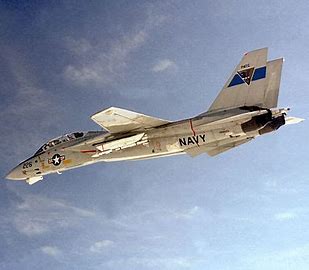
In the sky above Dallas in 1992, an F-14 Tomcat hurtles towards an airstrip, a bullet with tires, its wings ominously stuck in the swept-back position.

The pilot, Mark Vizcarra, is poised at the controls, his training put to the ultimate test. This is the story of a close call that showcased the indomitable human spirit and the profound capabilities of military aviation technology.

The Tomcat, a marvel of engineering that emerged from the minds of strategists and engineers at Grumman Aerospace Corporation, was designed to thrive in the air by changing the sweep of its wings to adapt to the wildly varying speed regimes of combat.

This variable-sweep wing, which imitates the nature of birds, was a breakthrough inspired by decades of work and tragic lessons from experimental predecessors such as the Bell X-5.

The Tomcat’s predecessors bore witness to the challenges of high-degree wing angles and their potential for instability, as tragically demonstrated by the loss of Air Force Major Raymond Popson in 1953.

Yet, when the F-14 Tomcat took to the skies, it was equipped with a sophisticated computer-controlled, fully automatic sweep wing system, a testament to the advanced aeronautical technology of its time.

Designed to transition smoothly from a broad 64-foot wingspan to a compact 38-foot configuration, the Tomcat could shift from cruising to combat mode seamlessly.

Only two cases of crossover shaft failure had been recorded in the Navy’s F-14 operations over three decades, each ending in safe landings, a testament to the reliability of this formidable machine.

On that fateful day, Vizcarra found himself grappling with a rare but critical failure – his F-14’s wings refused to unsweep. The manual override that could save the day required extraordinary skill and nerves of steel.

The pilot’s extensive training kicked in as he executed a landing that seemed almost fated to end in disaster. Approaching the Dallas runway at a speed that would leave little room for error, Vizcarra had to rely on the arresting gear to bring the fighter jet to a halt on the 8,000-foot runway.

Vizcarra’s account of the incident is heart-stopping: “We dumped fuel to lighten the weight to get the approach airspeed as low as possible, but I saved enough gas to make it to Carswell if my plan didn’t work and I had to wave off,” he said. His description of the landing evokes images of a pilot in supreme control of his machine, a testament to the symbiosis between human and aircraft.

The role of the Commanding Officer and Landing Signal Officers (LSOs) was crucial in the success of Vizcarra’s landing. LSOs, awed by the precision of Vizcarra’s execution, likened the landing to that of “a bullet with tires,” revealing the razor-thin margin within which the pilot operated.

Vizcarra’s confidence post this event soared, firm in the knowledge that he could land under the most challenging conditions – a testament to the skill and daring that define military pilots.

Today, as we reflect on this harrowing experience, we are reminded of the sophisticated interplay of technology, engineering, and human courage that are the hallmarks of military aviation.

The F-14 Tomcat, a machine that faithfully served the U.S. Navy for more than three decades, is a symbol of these qualities, and Vizcarra’s story is an enduring reminder of the resolve of those who take to the skies in defense of their nation.
Relevant articles:
– How an F-14 Landed with Its Wings ‘Stuck’, The National Interest
– Swing Wings, smithsonianmag.com
